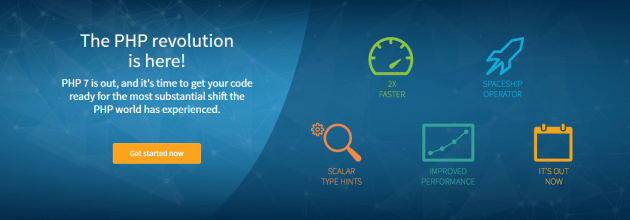2016 was a big year for WordPress, and 2017 is already set to be even bigger. With Let’s Encrypt changing the SSL landscape, Automattic changing the criteria of their recommended hosting solutions, and the REST API continuing its emergence, there’s a lot to consider in the months to come.
So what does all of this mean for WordPress developers and users? In a nutshell, it means a lot! The new year will bring with it huge changes to the world of WordPress, which could take you by surprise if you’re not up to speed.
In this post, we’ll dust off the crystal ball and walk you through three predictions for WordPress 2017. We’ll also take a look at how it could affect your workflow going forward. Let’s get cracking!
Potentially Switching Hosting Providers
A couple of years ago, Google announced HTTPS as a ranking factor. It’s led to the emergence of services such as Let’s Encrypt, which makes it easier for website owners to acquire SSL certificates. Fast forward to December 2016, Matt Mullenweg stated:
Early in 2017, we will only promote hosting partners that provide an SSL certificate by default in their accounts.
For the uninitiated, having an SSL certificate installed on your site means the link between your site’s server and your browser will be encrypted. This year, we can expect WordPress to debut features such as API authentication, which would require hosts to have HTTPS available.
As a result, WordPress will no longer be promoting hosting providers that don’t provide an SSL certificate by default. Simply put, if your current host doesn’t provide the option to encrypt your connection, it may be time for you to make the switch to one who does.
To decide, firstly check WordPress.org. The hosting recommendations here were updated last year, so if your WordPress site is hosted on any of these platforms, you’re good to go.
Integrating PHP 7
Around mid-2017 we can expect WordPress to update the recommended PHP version for servers from 5.6 to 7, which means some big incoming changes. Some hosting providers have already started adopting the latest release, and are prepared to fully support it for their users.

There are two main advancements that PHP 7 brings:
- A brand new engine. PHP 7 has let go of the old Zend Engine II, replacing it with the brand new PHPNG engine. Benchmark tests have reported that most applications run twice as fast on the new engine.
- Improved language features. It comes with a myriad of powerful language features that make development more streamlined, such as the new ‘spaceship’ operator and scalar type hints.
Although PHP 7 is new technology, we’ve previously discussed how some aren’t too keen on its adoption. As is the case with any new technology, PHP 7 has its own drawbacks, such as deprecated items, multiple default clauses, and engine exceptions. That being said, the benefits far outweigh the negatives, and in all honesty, there’s little to stop PHP 7’s imminent arrival in any case.
Here’s a quick outline of what you need to do to make a successful switch when the time comes:
- Firstly, take a look at any backwards incompatibility issues relating to WordPress’ core, themes, and plugins.
- Upgrade to PHP 7 on your test server.
- Test your site on your localhost setup before pushing it live.
- Perform benchmarks to see where you stand, tweaking your settings accordingly.
For a more in-depth look, our Developer’s Checklist for PHP 7 is a great starting point for those of you who want to make the switch without missing a step.
Implementing the WordPress REST API

The shape of the WordPress REST API is now becoming more apparent. In his recent State of the Word address, Matt Mullenweg has delved a little deeper into how the REST API pertains to WordPress; and although WordPress 4.7 included content end points for the API, the WordPress admin will be the first to potentially benefit.
Although we’re still scratching the surface of the REST APIs capabilities, it seems we’re definitely headed in the right direction. Of course, we’ll likely find out more in March at the next A Day of REST conference.
It’s no secret that the REST API is going to be at the very center of WordPress’ future. Theme and plugin developers have already started researching how to leverage the REST API into future projects. What’s more, many WordPress website owners have accepted that the future state of their sites will largely depend on the possibilities of the new technology. To that end, there are some notable real world REST API projects already underway, including include Calypso, Event Espresso, and Human Made.
What this means for developers is pretty clear: it’s time to embrace JavaScript. We’ve covered the topic previously, and quite simply, cracking out the books and getting to know this language (if you don’t already) is going to be pretty important to your WordPress future in 2017.
Conclusion
WordPress is on the cusp of some major changes that are likely to affect both developers and end users. Understanding the anticipated changes, and adapting to them early on, can help you get things in order before it’s too late.
In this post, we’ve offered three aspects of how WordPress’ development in 2017 will affect your workflow. Let’s recap:
- Given that WordPress will only recommend hosts offering SSL certification by default, you may need to make the switch to a WordPress recommended host.
- PHP 7 is soon going to be the norm. If you haven’t updated to the latest version already, we suggest doing so now.
- The time has come to begin researching the REST API and JavaScript, and using it in your future projects.
What are your predictions for WordPress in 2017? Let us know in the comments section below!
Image credit: geralt.

No Comments